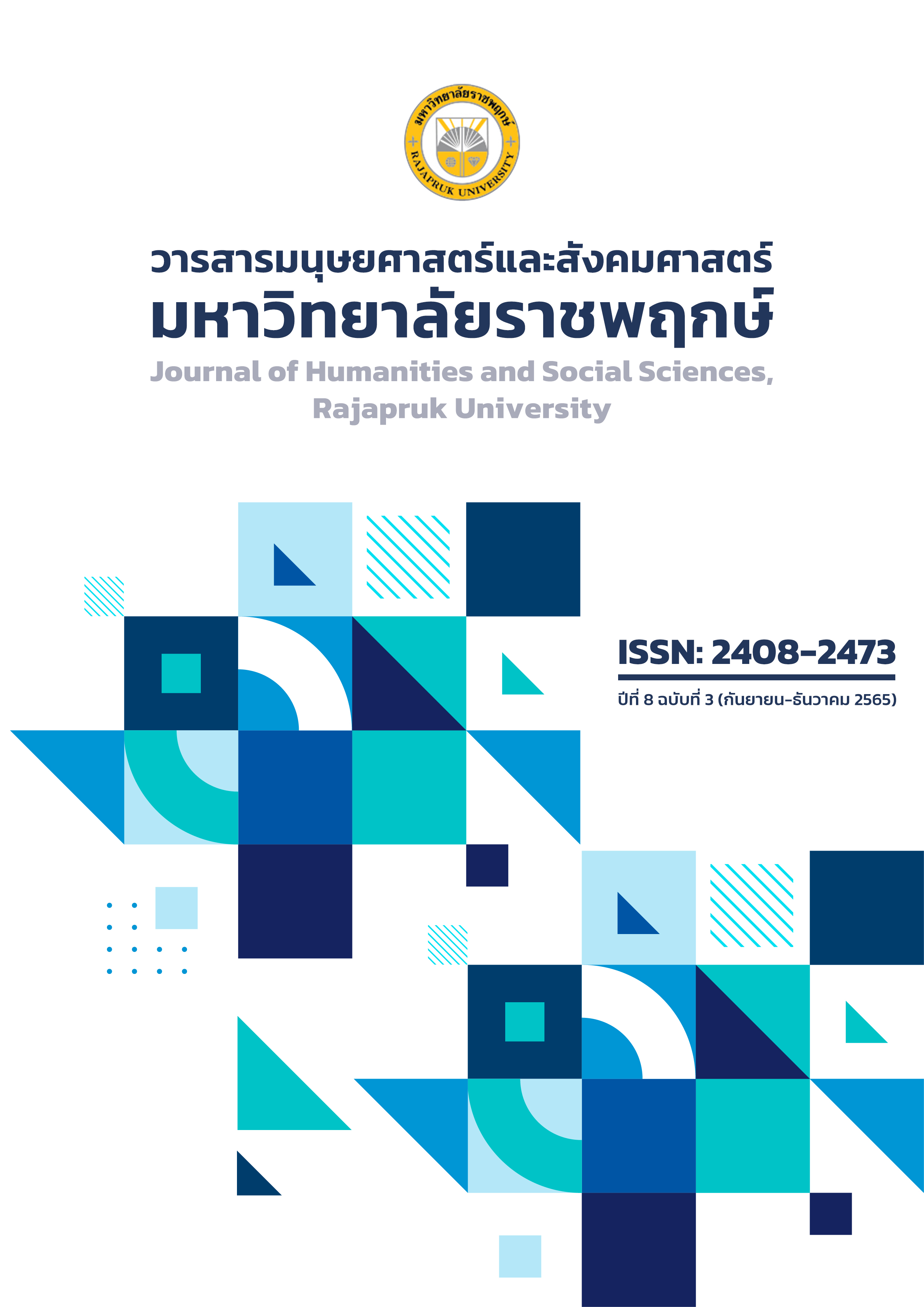รูปแบบการพัฒนาทายาทเกษตรกรรุ่นใหม่ตามศาสตร์พระราชาในพื้นที่ภาคเหนือตอนบน
Main Article Content
บทคัดย่อ
การวิจัยครั้งนี้มีวัตถุประสงค์ 1) เพื่อวิเคราะห์องค์ประกอบของการพัฒนาทายาทเกษตรกรรุ่นใหม่ตามศาสตร์พระราชาในพื้นที่ภาคเหนือตอนบน 2) เพื่อสร้างรูปแบบการพัฒนาทายาทเกษตรกรรุ่นใหม่ตามศาสตร์พระราชาในพื้นที่ภาคเหนือตอนบน และ 3) เพื่อตรวจสอบรูปแบบการพัฒนาทายาทเกษตรกรรุ่นใหม่ตามศาสตร์พระราชาในพื้นที่ภาคเหนือตอนบน ประชากรในการวิจัยครั้งนี้ แบ่งออก 3 กลุ่ม กลุ่มที่หนึ่ง ทายาทเกษตรกรรุ่นใหม่ในพื้นที่ภาคเหนือตอนบน จำนวน 400 คน กลุ่มที่สอง กลุ่มผู้ให้ข้อมูลหลัก จำนวน 3 กลุ่ม รวมทั้งสิ้น 30 คน และกลุ่มที่สาม กลุ่มผู้ให้ข้อมูลหลัก จำนวน 3 กลุ่ม รวมทั้งสิ้น 33 คน โดยใช้เครื่องมือวิจัย 3 แบบ ประกอบด้วย แบบสอบถาม แบบสัมภาษณ์ และแบบสัมภาษณ์โดยใช้แบบประเมิน การวิเคราะห์ข้อมูลใช้สถิติการวิเคราะห์องค์ประกอบเชิงสำรวจ ร้อยละ ค่าเฉลี่ย ส่วนเบี่ยงเบนมาตรฐาน และการวิเคราะห์เนื้อหา
ผลการวิจัย พบว่า 1) องค์ประกอบของการพัฒนาทายาทเกษตรกรรุ่นใหม่ตามศาสตร์พระราชาในพื้นที่ภาคเหนือตอนบน ประกอบด้วย 5 องค์ประกอบ ได้แก่ การพัฒนาการมีส่วนร่วมในการตัดสินใจ การเข้าถึงนโยบายการสนับสนุนของภาครัฐ การพัฒนาด้านการบริหารจัดการ การเข้าใจ และการมีส่วนร่วมในการดำเนินงาน 2) รูปแบบการพัฒนาทายาทเกษตรกรรุ่นใหม่ตามศาสตร์พระราชาในพื้นที่ภาคเหนือตอนบน ประกอบด้วย 6 ส่วน ได้แก่ 1) บริบทของพื้นที่ภาคเหนือตอนบน 2) ปัจจัย 3) กระบวนการ มี 4 มิติ 5 ขั้นตอน 10 กระบวนการ 4) ผลผลิต 5) ผลลัพธ์ และ 6) ตัวชี้วัดความสำเร็จ และ 3) การตรวจสอบรูปแบบ 4 ด้าน ได้แก่ ความถูกต้อง ความเป็นประโยชน์ ความเป็นไปได้ และความเหมาะสมในภาพรวมอยู่ในเกณฑ์ที่รูปแบบสามารถนำไปปฏิบัติได้
Article Details
เอกสารอ้างอิง
กรมการจัดหางาน กองบริหารข้อมูลตลาดแรงงาน. (2560). ยุทธศาสตร์การแก้ไขและป้องกันการขาดแคลนแรงงาน พ.ศ. 2560 – 2565. กรุงเทพฯ: กระทรวงแรงงาน.
กระทรวงเกษตรและสหกรณ์. (2559). แผนพัฒนาการเกษตรในช่วงแผนพัฒนาเศรษฐกิจและสังคมแห่งชาติ ฉบับที่ 12 (พ.ศ.2560-2564). กรุงเทพฯ: กระทรวงเกษตรและสหกรณ์.
กลุ่มพัฒนาเกษตรกร สำนักงานส่งเสริมและพัฒนาการเกษตรที่ 6 ภาคเหนือตอนบน. (2562). จำนวนเกษตรกรรุ่นใหม่ ตั้งแต่ปี พ.ศ.2557-2562 ในเขตภาคเหนือตอนบน. เชียงใหม่: กลุ่มพัฒนาเกษตรกร.
กัลยา วานิชย์บัญชา.(2556). การวิเคราะห์สถิติ: สถิติสำหรับบริหารและวิจัย. พิมพ์ครั้งที่ 10. กรุงเทพฯ: โรงพิมพ์จุฬาลงกรณ์มหาวิทยาลัย.
ทรงเกียรติ อิงคามระธร และคณะ. (2561). การพัฒนาเกษตรกรผู้ปลูกสับปะรดจังหวัดราชบุรี ให้เป็น Smart Farmer โดยการเรียนรู้จาก Smart Farmer ต้นแบบ. รายงานวิจัยฉบับสมบูรณ์ สำนักงานกองทุนสนับสนุนการวิจัย (สกว.).
นาวิน พรมใจสา และคณะ. (2563). เอกสารประกอบการสอน รายวิชาศาสตร์พระราชา. เชียงราย: สำนักวิชาสังคมศาสตร์ มหาวิทยาลัยราชภัฏเชียงราย.
มรกต กำแพงเพชร สวรรยา ธรรมอภิพล และ นรินทร์ สังข์รักษา. (2562). คุณลักษณะผู้ประกอบการเกษตรที่ประสบความสำเร็จในธุรกิจเกษตรสีเขียว. วารสารธุรกิจปริทัศน์, 11 (1) มกราคม-มิถุนายน 2562: 262-275.
มรกต กำแพงเพชร. (2560). การพัฒนารูปแบบการสร้างผู้ประกอบการเกษตรกรปราดเปรื่องในธุรกิจเกษตรอินทรีย์ของประเทศ ไทยยุค 4.0. หลักสูตรปรัชญาดุษฎีบัณฑิต สาขาวิชาการจัดการ มหาวิทยาลัยศิลปากร.
วิทูลย์ แก้วสุวรรณ. (2558). ยุทธศาสตร์การพัฒนาชุมชนตามแนวปรัชญาเศรษฐกิจพอเพียง. ดุษฎีนิพนธ์ รัฐประศาสนศาสตรดุษฎีบัณฑิต สาขาวิชารัฐประศาสนศาสตร์ มหาวิทยาลัยราชภัฏวไลยอลงกรณ์ ในพระบรมราชูปถัมภ์.
ศรายุทธ รัตนปัญญา และคณะ. (2559). การพัฒนารูปแบบการประเมินสมรรถนะโดยประยุกต์ใช้การประเมินแบบเสริมพลังอำนาจสำหรับผู้บริหารสถานศึกษาใหม่สังกัดสำนักงานคณะกรรมการการศึกษาขั้นพื้นฐาน. วารสารบัณฑิตศึกษา มหาวิทยาลัยราชภัฏสกลนคร, 13(60) มกราคม-มีนาคม 2559: 201-212.
Cronbach, Lee. J. (1990). Essentials of Psychology Testing. 5th ed. New York: Harper Collins Publishers Inc.
Eisner, E. (1976). Educational connoisseurship and criticism: Their form and functions in education evaluation. Journal of Aesthetic Education, 39(2): 192-193.
Field, A. P., Miles, J., & Field, Z. (2012). Discovering statistics using R. Thousand Oaks, CA: Sage.
Guo, G., Wen, Q., & Zhu, J. (2015). The impact of aging agricultural labor population on farmland output: from the perspective of farmer preferences. Mathematical Problems in Engineering. the Project Guide Research Fund of Philosophy and Social Science in Colleges and Universities in Jiangsu.
Hair, J. F., Tatham, R. L., Anderson, R. E., & Black, W. (1998). Multivariate data analysis. 5th ed. Upper Saddle River, NJ: Prentice Hall.
Ketelaar-de Lauwere, Carolien, Ina Enting, Peter Vermeulen, and Kees Verhaar. (2002). Modern Agricultural Entrepreneurship. Paper presented at the International Farm Management Association, 13th Congress.
McElwee, Gerard. (2006). Farmers as Entrepreneurs: Developing Competitive Skills. Journal of developmental entrepreneurship, 11(3): 187-206.
Ozimek, A., DeAntonio, D., & Zandi, M. (2018). Aging and the Productivity Puzzle. Retrieved on June 8th, 2020, from https://ma.moodys.com/rs/961-KCJ-308/images/2018-09-04-Aging-and-the-Productivity-Puzzle.pdf

